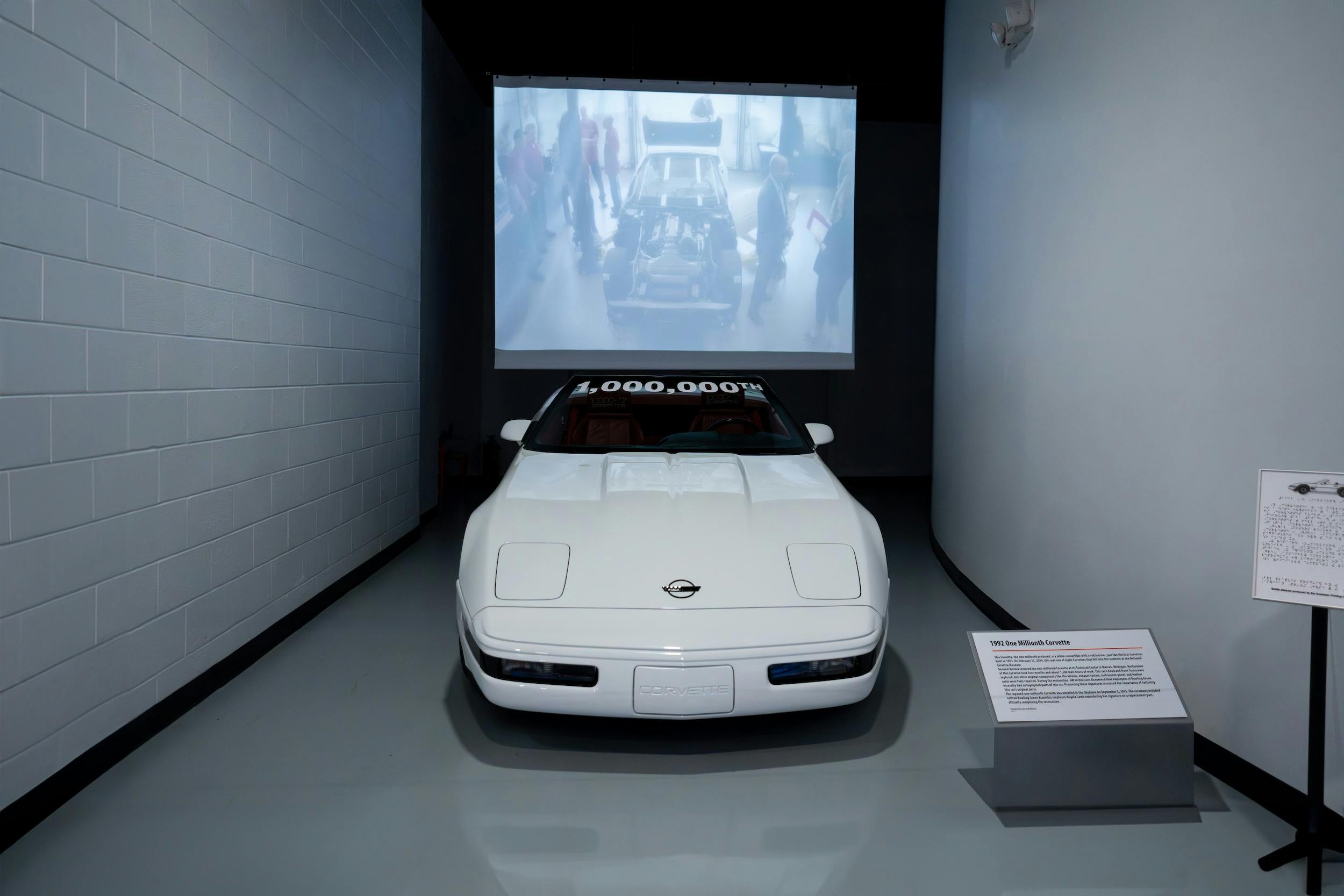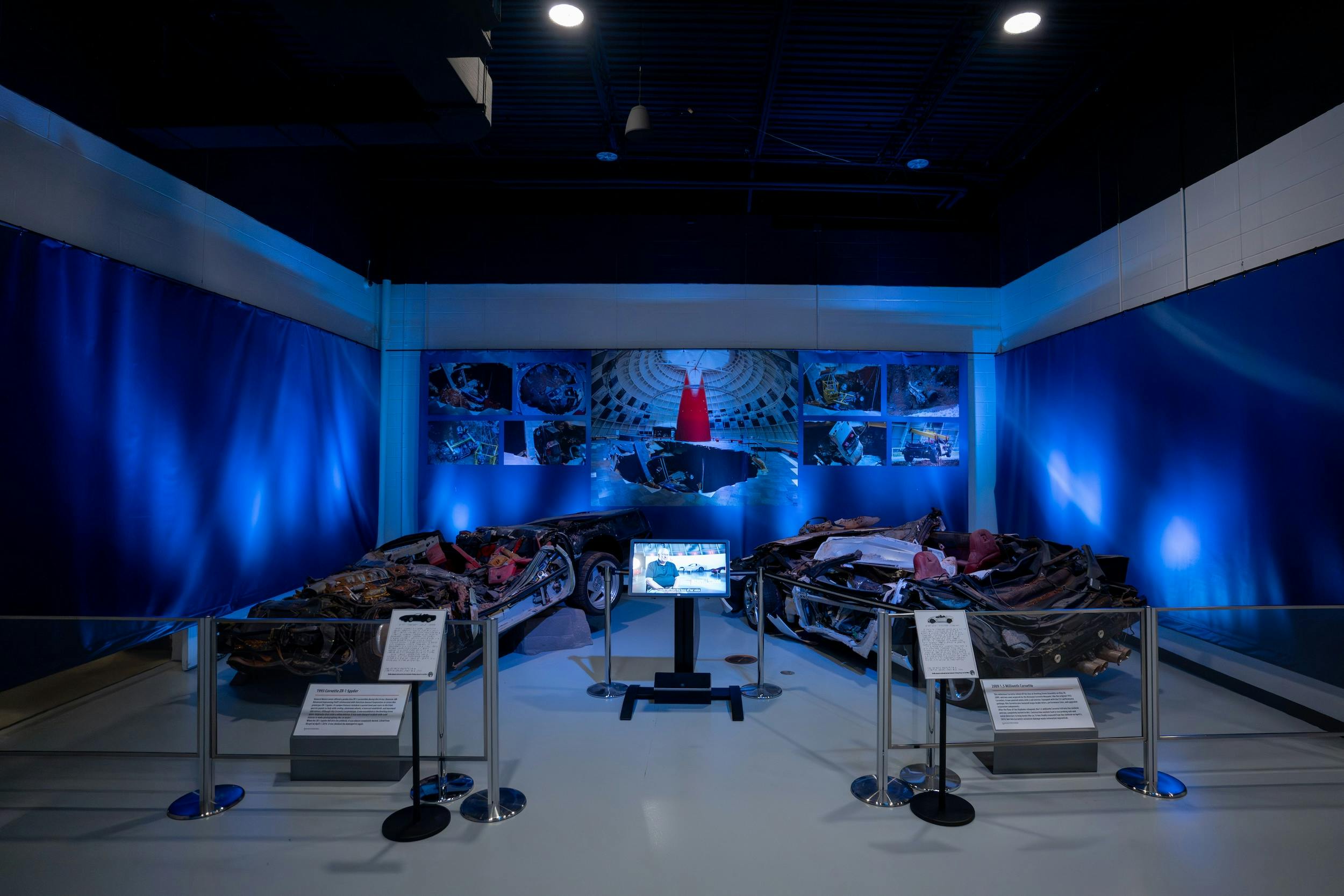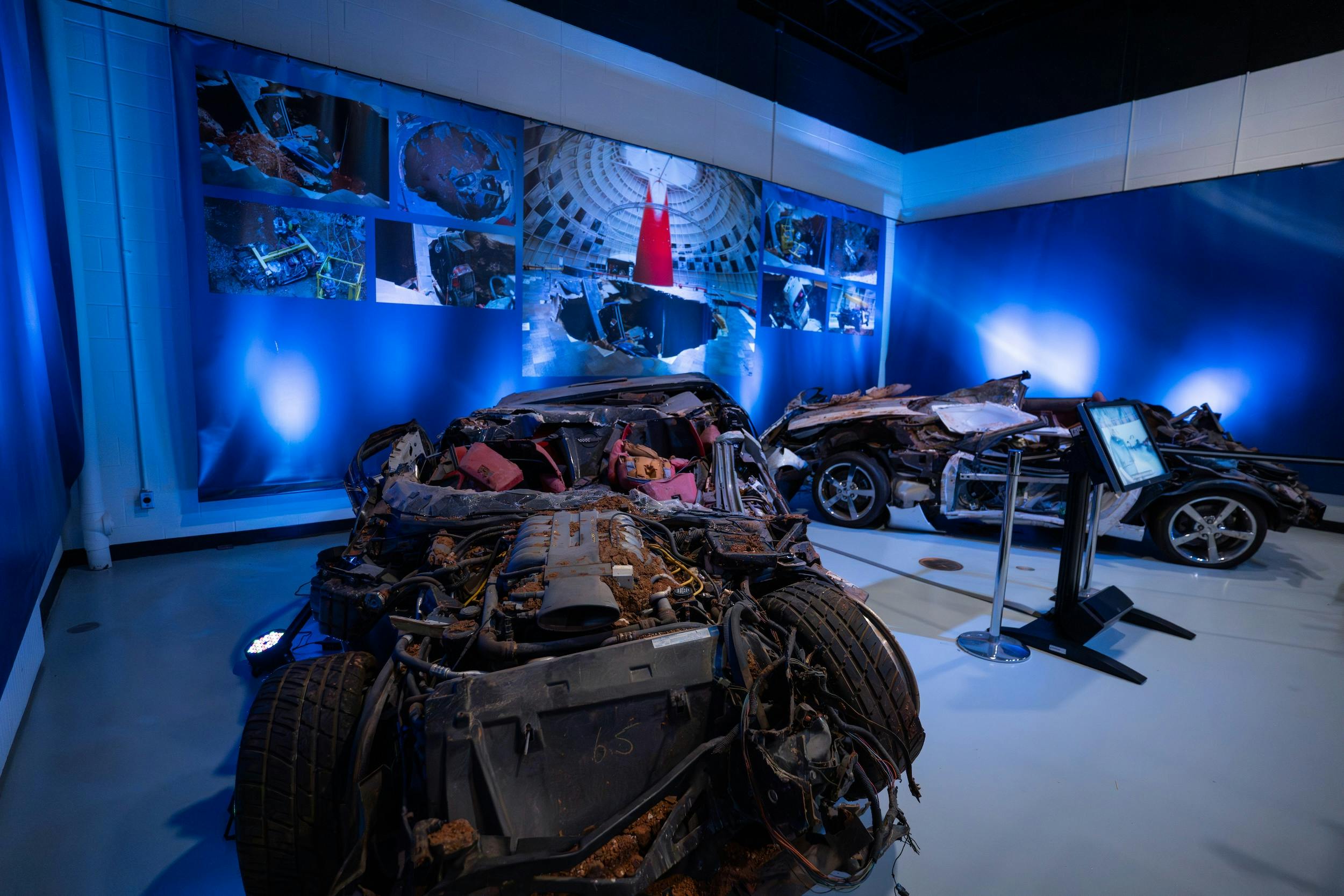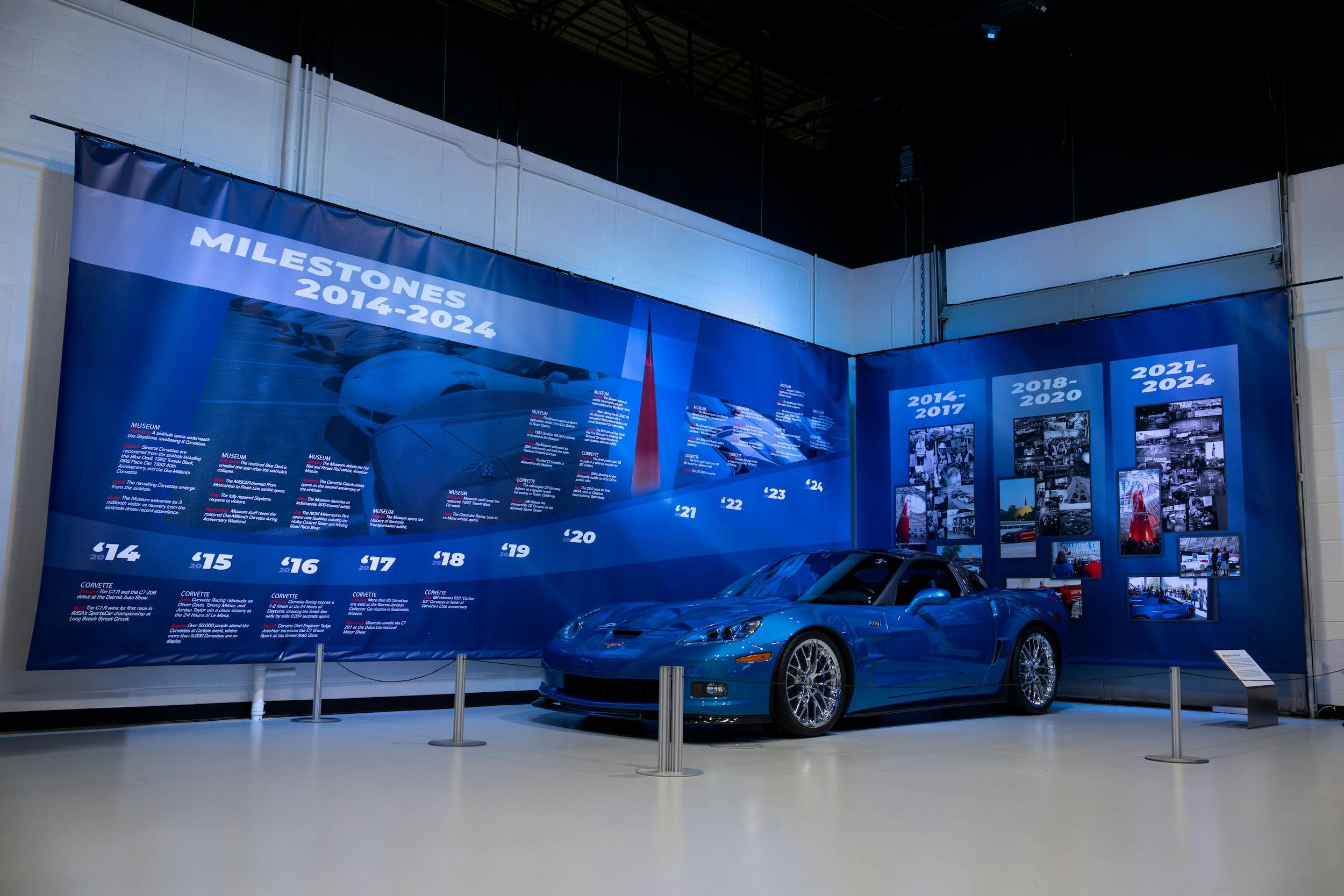Dammit, Karst! Remembering the Sinkhole Corvettes, 10 Years Later
Blame karst. No, that’s not a person, it’s a thing, and you may be standing on karst right this minute. It’s a German word originally used to describe a part of Europe where the terrain rests on a bed of soluble rock, typically limestone, which over time can basically wash away.
And when it washes away, it leaves a void, which can cause the ground above it to collapse, which results in sinkholes. And wouldn’t you know it? “Kentucky is one of the most famous karst areas in the world,” writes James C. Cobb, geologist for the Kentucky Geological Survey, in an essay titled, with the exclamation mark, “Kentucky Is Karst Country!”
Just after 5 a.m. on February 12, 2014, what is arguably Kentucky’s most famous sinkhole—and that’s covering some territory—opened inside the National Corvette Museum in Bowling Green, swallowing eight very valuable Chevrolet Corvettes.
“Wheels Up!” was the headline for the resulting story on NBC News. “Kentucky Sinkhole Eats Corvettes,” wrote National Geographic. “Tears were shed,” divulged the Museum’s then-executive director, Wendell Strode.
Shortly after the tears dried, the Museum leaned into the sinkhole story, quickly recognizing that it was a publicity bonanza. And it’s still mining that sinkhole, having just launched a new exhibit commemorating the 10th anniversary of the incident called “Ground to Sky: The Sinkhole Reimagined.”
Robert Maxhimer, the Museum’s Director of Cultural Affairs and Education, has a robust resume that includes nearly 10 years at the Walt Disney Company, creating content for worldwide exhibitions. But he admits that this is his first time developing an exhibit where the star is a sinkhole.



“The idea is to give people an opportunity to see these cars and tell the story of the sinkhole, and really focus on what we’ve done since then,” he told Hagerty. “What Corvette has done, what the Museum has done in the past 10 years.”
The exhibit opened earlier this month, and so far, “The reaction has been great,” he said. “Before we opened it, every time I went out into the galleries people would ask me where the sinkhole cars are, and this gives me an opportunity to point them in that direction. It’s always hard to see a beautiful car completely demolished, but we display that, as well as the ones that were restored.”
The victims of the sinkhole were an eclectic lot, as far as Corvettes go, and a pricey bunch. They were a black 1962 Corvette convertible, a 1984 PPG Indy Car World Series pace car, a 2009 ZR1 Blue Devil, a 1992 white car that was the one-millionth Corvette built, a white 2009 that was the 1.5 millionth Corvette built, a 1993 ruby red 40th Anniversary Corvette, a 2001 Mallett Hammer Z06 Corvette, and a 1993 ZR-1 Spyder.




The first car pulled from the rubble was the ZR1 Blue Devil, in remarkably good shape. It and a few of its cousins were subsequently restored—one by the Museum staff, and two by General Motors—but the rest were deemed beyond help: The 1.5 millionth Corvette, the ZR-1 Spyder, the PPG pace car, the 40th Anniversary car, and the Mallet Hammer, which originally, investigators couldn’t even find. It was eventually located in the rubble inside the 30-foot-deep sinkhole, upside-down, pounded by a substantial boulder. That boulder now sits outside the museum’s Stingray Café.
The ZR-1 Spyder, the 1962 Corvette, and the 1.5 millionth Corvette were brought out of long-term storage to be displayed for the “Ground to Sky” exhibit. They sit next to the 2009 ZR-1 Blue Devil and one-millionth Corvette.
The repair to the Museum’s Skydome, where the sinkhole occurred, was a complex undertaking. “There were caissons put in that went down several hundred feet to reinforce the floor,” Maxhimer said. “There is an access hole, so you can actually look through a hatch to the bottom of the sinkhole. We’ve had geologists who have crawled down there and make sure there is no shifting or seismic activity. It’s cool for guests to be able to actually see down there.”
And since the Museum is located a mile from GM’s Bowling Green Assembly plant, where the Corvette has been built since 1981, the exhibit chronicles the past 10 years’ worth of Corvettes, which covers the end of the front-engine, seventh-generation car, the C7, and the transition to the mid-engine C8, including the 670-horsepower Z06, the hybrid E-Ray, and soon the eagerly anticipated 2025 ZR-1, which will be unveiled on July 26.
The “Ground to Sky: The Sinkhole Reimagined” exhibit runs through September 15. “Plan your visit to explore the Museum’s history,” says the press release, “and see the legendary sinkhole Corvettes before they return to long-term storage and out of public view.” Click here for more information.
And when you’re through, you can make the 30-mile trek over to see Kentucky’s other monument to what karst can do: Mammoth Cave.




***
Check out the Hagerty Media homepage so you don’t miss a single story, or better yet, bookmark it. To get our best stories delivered right to your inbox, subscribe to our newsletters.



I did the mechanical repairs to the blue devil, while our body shop fixed the body damage. I also helped locate the donor vehicle that was used for parts to fix the 1,000,000th vette. Fun times. I believe that the mallet vette had only been there a few weeks before the sink hole opened up and swallowed it. It driven there from Florida by the owner and donated.
I like it
I wish the PPG car was recreated. It was really nice. The Mallet could be replaced as they are around.
The million .5 car should be stipped and restored for history.
But I know money is always a factor. I think GM stepped in and restored the 62 if I recall the stories back then.
When we toured the museum, we were told the criteria decision to repair was the har had to be minimum 50% original parts
The Corvette museum had some cool sinkhole related stuff in 2019 when I visited around labor day. Looks like they expanded on it further. Great place to visit.
I was there at The Bloomington Gold show when the One Millionth was given away at the fairgrounds.One excited Lady she was.
We visited it 2 summers ago while taking out 92 Heritage z28 to the GM Nationals in Pennsylvania from Texas. Wife really enjoyed reading the history of the sinkholes and each of the vettes that got swallowed up.
The only time worse than the sinkhole catastrophe was the day Elvis died!!
Thank you for the follow up article .
I always wondered what happened .
-Nate
It’s interesting how the sink hole was only under the floor and not under the foundation. Maybe that large exposed pipe leaked and did the damage?
Glad to see some of these Vettes saved. Especially the ’62 for me. That was a sad day.
May I ask a potentially dumb question? In a place like Kentucky with this kind of geology being common, are there no preliminary surveys done before construction is started on a project like the museum? I would think geologists would have a good idea what is underfoot in a vacant lot and what the potential could be. Not trying to point blame or anything. Just curious.
Thank You for great and amazing article. Very interesting.
Little did anyone know at the time that when the sinkhole occurred, it would be possibly the best thing to have ever occurred for the NCM. Thousands have been drawn to the museum solely because of their interest in the sinkhole. I credit the NCM staff for capitalizing on the event and making it a marketing cornerstone.